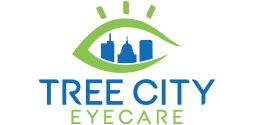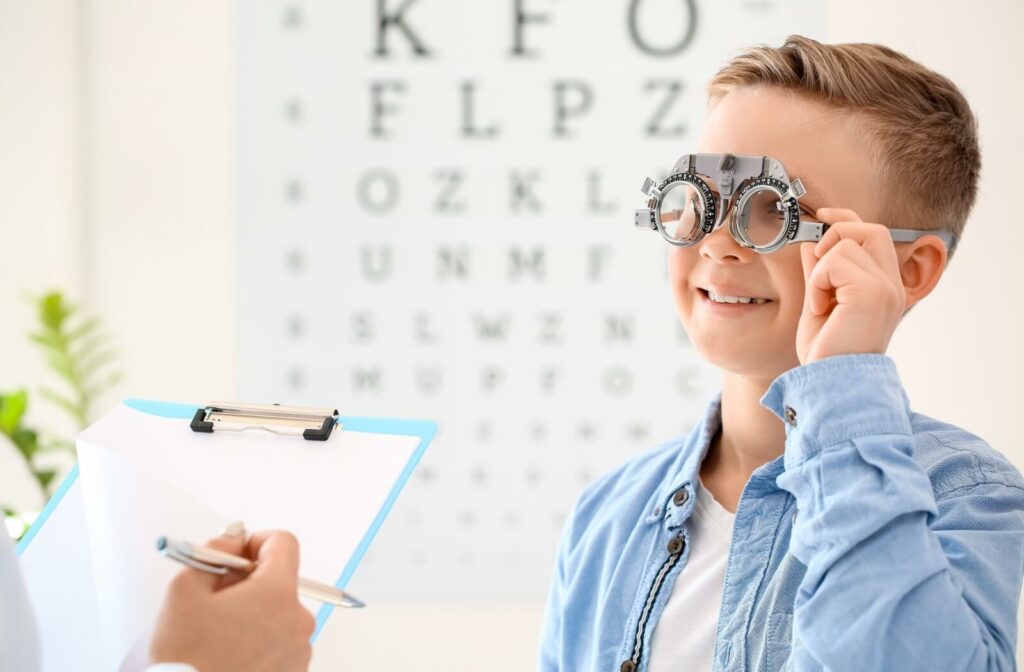Vision troubles are a lot more common than most people think. Conditions like myopia are prevalent and affect millions of Americans in their everyday lives. While these conditions are easily treatable with your optometrist’s help, some people notice that over the years, their vision gets worse. So does myopia get worse with age, or is it something else?
Myopia typically worsens through early childhood before stabilizing around the age of 20 or so. While your prescription may slightly change over the years, this isn’t common. For adults experiencing significant vision changes—especially to their nearby vision—visit your optometrist to get checked for presbyopia, a condition more often associated with growing older.
What Is Myopia?
Your vision relies on light being able to properly enter the eye, bending as it does so, to reach the light-sensitive tissue at the back called the retina. This process requires the cornea—the clear dome-shaped tissue at the front of the eye—to be able to refract this light properly. But when there’s a problem with the shape of this tissue, or even just the eye itself, the light doesn’t reach where it needs to, and you have blurry vision. These problems are called “refractive errors.”
Myopia is a refractive error where the eye develops to be too long or the cornea grows to become too curved. This incorrect shape means that light is focused in front of the retina, causing distant objects to appear blurry while near ones remain clear. Due to this, it’s often called “nearsightedness.”
Usually, myopia develops around the age of 6-14, and continues developing until around the age of 18 or so.
How to Recognize Myopia
Recognizing the symptoms of myopia early on in your child’s life is essential; it lets you intervene sooner rather than later. Try to look out for the following signs:
- Squinting frequently to see distant objects clearly
- Sitting too close to the television or holding books very close to the face
- Complaints of headaches or eye strain after prolonged activities
- Difficulty seeing the board at school or road signs while driving
- Excessive blinking or rubbing of the eyes
If your child experiences any of these symptoms, it’s important to visit an optometrist for a proper diagnosis. If your optometrist specializes in myopia control, as we do at Tree City Eyecare, they can help develop a plan to slow your child’s myopia progression.
What Can Make Myopia Worse?
Usually, myopia stabilizes by early adulthood. This progressive condition rarely gets worse past this point—though it’s not impossible. For adults living with myopia, your prescription should stay relatively stable throughout your life.
However, if you’re noticing that your vision is getting worse—specifically your nearby vision—you may be dealing with a condition called “presbyopia.”
What Is Presbyopia?
Presbyopia is a natural part of aging where the eye’s natural lens slowly becomes less flexible. This makes it more difficult for the lens to change shape and focus clearly on nearby objects. Presbyopia typically becomes noticeable around the age of 40 or so, though this can vary somewhat.
The Early Signs of Presbyopia
If you’re beginning to experience presbyopia, you might notice the following signs:
- Difficulty reading small print
- Eye strain or headaches after reading or doing close work
- Needing brighter lighting for reading or other nearby tasks
If you’re experiencing any of these signs, you may be dealing with presbyopia. So what do you do?
How to Treat Vision Problems
Whether you’re dealing with myopia, presbyopia, or another vision issue, your first step should always be to visit your optometrist. This step is crucial; it lets an experienced eye care professional examine your eyes to find the root cause of your vision problems.
Once the exam is complete, your optometrist may recommend you begin with a pair of presbyopia correcting lenses. These can come as either contact lenses (multifocal) or eyeglasses (progressives or bifocals). These lenses incorporate multiple prescriptions into one lens, allowing you to maintain clear vision at both near and far distances.
Can Laser Eye Surgery Fix Presbyopia?
For people considering laser eye surgery to correct presbyopia, there is a bit of bad news. Usually, laser eye surgery can correct conditions like myopia—it involves the re-shaping of the cornea to allow your eye to properly refract light. It can be effective if your vision issues are due to myopia.
However, presbyopia can be a little more complicated. It isn’t caused by a problem with the shape of the eye, so reshaping the cornea won’t help. Because it’s caused by an issue with the lens’ focusing abilities, laser eye surgery generally can’t treat presbyopia alone. While there are some cases where each eye can be corrected for different distances, this isn’t a universal answer, and more research needs to be performed before surgery becomes a viable option for everyone.
This means that if you’re diagnosed with presbyopia, you’ll typically need to rely on your glasses and contact lenses rather than a potential surgery. Talk to your optometrist for more information.
Keep Your Vision Clear
If you’re experiencing any changes in your vision, reach out to our team at Tree City Eyecare. You deserve clear, comfortable vision, and our team is here to help you achieve your vision goals. Don’t let blurry vision disrupt your daily life—book an appointment with our team today, and let us help!


